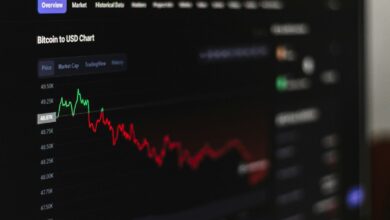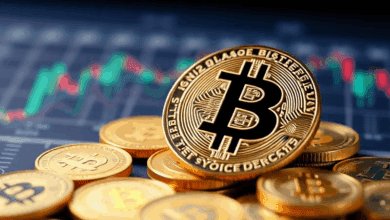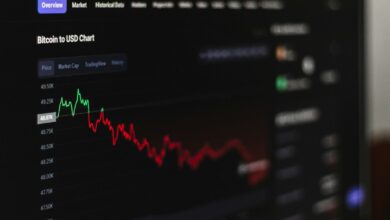Stablecoins – understanding price-stable cryptocurrencies

To maintain consistent value, stablecoins rely on a reserve-backed system that secures their peg to fiat currencies like the US dollar. For instance, USDC operates with transparent reserves held in regulated financial institutions, enabling reliable price stability and reducing volatility common in other digital assets.
The mechanism behind sustaining the peg involves continuous monitoring of supply and demand dynamics alongside periodic audits of collateral reserves. This approach ensures that each token remains redeemable at a fixed rate, providing users with a dependable medium for transactions and store of value within decentralized finance ecosystems.
Evaluating stablecoins requires analyzing their underlying collateral structure–whether fully backed by cash equivalents or partially supported by crypto-assets. Such scrutiny helps in assessing risk exposure and resilience during market stress, which directly influences confidence among investors and institutional participants.
Stablecoins: understanding price-stable cryptocurrencies [Digital Finance digital-finance]
Maintaining a consistent peg to traditional fiat currencies is fundamental for stablecoins aiming to minimize volatility inherent in most digital assets. For example, USDC achieves its price stability by backing each coin with an equivalent reserve of US dollars held in regulated financial institutions, audited regularly to ensure transparency and trust. This reserve-backed model provides a reliable mechanism for users seeking low-risk exposure within the blockchain ecosystem.
Technological architectures behind these instruments vary, but their primary objective remains the preservation of value parity. Algorithmic approaches attempt to sustain the peg through smart contract-driven supply adjustments without direct collateral. However, such models have faced challenges under market stress, highlighting the importance of rigorous reserve management and transparent governance structures in maintaining user confidence.
Technical frameworks and operational mechanisms
The most widespread class relies on fiat-collateralization, combining custodial reserves with blockchain-issued tokens. USDC exemplifies this paradigm by minting new coins only when matching USD deposits occur, ensuring one-to-one asset backing. In contrast, crypto-collateralized variants hold volatile tokens as reserves but employ overcollateralization and liquidation protocols to manage risk effectively. The interplay between these mechanisms dictates resilience against market fluctuations.
Algorithmic stablecoins utilize programmed incentives and token burns/mints to equilibrate supply-demand imbalances, targeting the peg without tangible collateral. Despite innovative codebases, instances like TerraUSD demonstrate vulnerabilities where rapid depegging triggered cascading failures due to insufficient market confidence and liquidity constraints. Such cases emphasize that algorithmic stabilization requires robust economic design alongside technical safeguards.
- Fiat-backed: Reserve-held assets ensure redemption at par value (e.g., USDC).
- Crypto-backed: Overcollateralization secures tokens against volatility.
- Algorithmic: Protocols adjust circulating supply dynamically without direct collateral.
Regulatory scrutiny intensifies as stablecoins gain adoption within payment systems and decentralized finance platforms. Compliance with financial laws mandates transparent reserve disclosures and risk management frameworks capable of mitigating systemic threats. For instance, USDC’s issuers provide monthly attestation reports verifying reserve adequacy, reinforcing market integrity amid evolving oversight standards worldwide.
The strategic deployment of price-anchored tokens facilitates cross-border transactions, remittances, and programmable money applications by reducing settlement friction associated with conventional cryptocurrencies’ unpredictability. Professionals managing digital portfolios increasingly integrate such instruments to hedge against volatility while retaining blockchain-native operational benefits–underscoring their growing significance in diversified asset allocation strategies.
How stablecoins maintain value
Maintaining a consistent peg to fiat currencies, such as the US dollar, is achieved primarily through the management of reserves that back each token. For example, USDT and USDC, two leading stable digital assets, rely on fully or partially collateralized reserves comprising cash, short-term government securities, and other liquid assets. This reserve structure ensures that for every issued unit of the coin, there is an equivalent asset held securely to redeem it at face value.
The stability mechanism depends heavily on transparent and frequent audits of these reserves, which provide market participants with confidence in the token’s backing. Any deviation from the peg triggers arbitrage opportunities where traders buy or sell the tokens against their fiat equivalent until equilibrium is restored. These self-correcting dynamics are crucial to preserving price stability without relying solely on algorithmic interventions.
Reserve-backed mechanisms and collateralization
Stablecoins like USDT operate under a fiat-collateralized model where one token equals one US dollar held in reserve or near-equivalent assets. In contrast, some designs incorporate crypto-assets as collateral but require over-collateralization due to volatility risk. This means locking up more value than the circulating supply to absorb price fluctuations without losing the peg.
- USDC: Maintained by regulated financial institutions holding reserves audited monthly; transparency reduces counterparty risk.
- Tether (USDT): Employs a mix of cash equivalents and commercial paper; its reserve composition has evolved based on regulatory scrutiny.
- Circuit-breakers: Some projects integrate automatic liquidation protocols if collateral falls below thresholds, safeguarding peg stability.
This approach emphasizes liquidity and trustworthiness of underlying assets rather than purely relying on market speculation or algorithmic supply adjustments.
Peg maintenance through market mechanisms
The peg’s integrity largely depends on active market participation across exchanges globally. Arbitrageurs play a pivotal role: when tokens trade below the fiat equivalence, they purchase discounted coins and redeem them for dollars at par value from issuers or secondary markets. Conversely, if tokens exceed parity, new issuance absorbs excess demand by minting additional units backed by fresh reserves.
This dynamic equilibrium benefits from large trading volumes and low transaction costs associated with prominent stable units like USDT and USDC. Such features promote quick reaction times during periods of volatility triggered by macroeconomic shifts or regulatory news affecting crypto markets.
Diversification in reserve assets and regulatory compliance
Diversification strategies mitigate risks linked to any single asset class within reserves. Incorporating treasury bills alongside cash balances allows issuers to optimize yield while maintaining liquidity requirements essential for redemption guarantees. Regulatory frameworks increasingly mandate transparency standards that force issuers to publish detailed breakdowns of reserve compositions periodically.
This evolving compliance landscape enhances investor trust while adding layers of operational rigor around reserve management.
The impact of algorithmic stabilization methods versus collateral backing
A subset of tokens employs algorithmic controls adjusting supply automatically based on demand signals to sustain price levels without direct asset backing. While this mechanism can reduce capital requirements associated with full collateralization, it introduces heightened vulnerability during extreme market stress when confidence erodes rapidly. Historical incidents demonstrate significant deviations from intended pegs caused by insufficient liquidity buffers or flawed protocol governance models.
The preference for fully or partially backed digital currencies remains dominant among institutional users seeking predictability and reduced counterparty risk compared to algorithm-driven alternatives lacking tangible reserve support.
Future perspectives: hybrid models integrating decentralized finance protocols
Evolving designs combine traditional reserve-backed structures with decentralized finance (DeFi) primitives such as smart contract-based collateral pools and automated liquidation systems enhancing resilience against systemic shocks. By leveraging multiple collateral types including tokenized real-world assets alongside crypto holdings, these models aim to balance stability with scalability demands emerging from increased adoption across global payment networks.
The continuous refinement of regulatory clarity concerning custody solutions and disclosure practices will further influence how these instruments maintain their valuation anchor amid shifting financial ecosystems worldwide.
Regulatory challenges for stablecoins
Effective oversight of assets maintaining a fixed value against fiat currencies is imperative to ensure market integrity and consumer protection. Regulatory bodies face the challenge of verifying that issuers hold adequate backing reserves, as exemplified by USDT, whose transparency concerning asset composition has periodically drawn scrutiny. The complexity increases with algorithmic variants relying on smart contracts to preserve their peg without direct collateral, raising questions about resilience under stress scenarios and necessitating tailored regulatory frameworks.
Jurisdictions struggle to harmonize rules due to the cross-border nature of these digital tokens, complicating enforcement and compliance verification. Different regulatory classifications–ranging from commodities to securities or payment instruments–create ambiguity around applicable legal requirements. This fragmentation affects market participants’ ability to operate confidently and can expose users to risks linked to insolvency or operational failures when reserve management practices lack clarity or standardized audits.
Key aspects influencing regulatory approaches
The assessment of reserve adequacy often hinges on independent attestations and real-time reporting mechanisms. For example, stablecoins pegged one-to-one with the US dollar typically must demonstrate liquid asset holdings equal or exceeding circulating supply, while those employing partial reserves require additional scrutiny on leverage ratios. Furthermore, regulators increasingly demand robust governance structures capable of managing redemption processes and mitigating systemic risk spillovers into traditional financial systems.
Divergent regulatory responses reflect varying risk tolerances and economic priorities. The U.S. Securities and Exchange Commission (SEC) emphasizes investor protection through stringent disclosure mandates, whereas the European Union’s Markets in Crypto-Assets regulation (MiCA) proposes comprehensive licensing regimes covering issuance, custody, and operational protocols. These evolving standards underscore the necessity for issuers to adopt transparent reserve management practices supported by advanced blockchain analytics tools capable of providing verifiable data streams essential for supervisory review.
Use Cases in Digital Finance
Maintaining a stable peg to fiat currencies, assets like USDT serve as foundational tools in financial ecosystems requiring consistent value representation. Their deployment as reliable reserves underpins seamless cross-border transactions, mitigating volatility risks inherent in traditional digital assets. This stability facilitates efficient treasury management for corporations and decentralized applications alike.
Integration of these tokens into lending platforms exemplifies their utility in collateralized borrowing and lending markets. By leveraging assets with predictable value retention, platforms reduce liquidation risks and enhance user confidence. Such mechanisms have contributed to the exponential growth of DeFi protocols managing billions in locked value.
Specific Applications and Technical Insights
Payment gateways incorporating stable-value tokens enable merchants to accept digital payments without exposure to price fluctuations common among other blockchain-based units. Case studies from regions with unstable local currencies demonstrate how these instruments preserve purchasing power and streamline settlement processes.
Algorithmic reserve systems combine various asset classes to maintain token stability through dynamic adjustments. For instance, multi-collateral models allocate reserves across crypto and fiat holdings, ensuring peg integrity even during market stress. This approach contrasts with single-asset-backed solutions, highlighting scalability challenges and risk diversification strategies.
- Remittances: Utilizing pegged tokens reduces transfer fees and settlement times compared to conventional banking channels.
- Decentralized Exchanges (DEXs): Stable-value tokens provide liquidity pools with low slippage options, enhancing trading efficiency.
- Yield Farming: Investors leverage these assets to earn returns while minimizing exposure to price swings.
The resilience of pegged digital assets is increasingly tested by regulatory frameworks influencing reserve transparency and operational compliance. Enhanced auditability contributes to institutional adoption while fostering trust among end-users. Future developments may focus on hybrid reserve structures combining on-chain verifiability with off-chain asset management.
The evolving functionality of such tokens continues shaping the fabric of decentralized financial services. By offering a bridge between volatile markets and traditional economic units, they present opportunities for innovation balanced against systemic safeguards. Critical evaluation of reserve mechanisms remains paramount for sustaining long-term viability in diverse financial applications.
Risks and Vulnerabilities Overview
Maintaining a robust peg requires rigorous transparency and resilient reserve management, as illustrated by the contrasting cases of USDC and USDT. While USDC consistently publishes detailed audits ensuring that its reserve backing aligns closely with circulating tokens, USDT’s historical opacity has periodically raised concerns about its actual collateral sufficiency. These disparities underscore the criticality of reliable reserve frameworks to uphold stability in tethered digital assets.
Algorithmic mechanisms designed to maintain price stability introduce additional vectors of systemic risk, particularly under extreme market stress when liquidity evaporates or confidence wanes. The potential for de-pegging events amplifies when reserves are fractional or invested in volatile instruments, challenging assumptions about these coins as safe-havens within decentralized finance ecosystems. Forward-looking protocols must integrate adaptive safeguards and real-time monitoring to mitigate contagion risks.
Key Technical Insights and Future Implications
- Reserve Composition Transparency: Detailed disclosures akin to USDC’s monthly attestations foster trust and enable stakeholders to assess solvency effectively, reducing arbitrage-driven volatility.
- Peg Stability Mechanisms: Hybrid models combining collateralization with algorithmic adjustments can enhance resilience but require meticulous calibration to avoid cascading failures.
- Regulatory Alignment: Increasing regulatory scrutiny mandates compliance frameworks that ensure backing assets meet liquidity and capital adequacy standards, influencing stablecoin issuance strategies globally.
- Cross-Chain Interoperability Risks: As stablecoins extend across multiple blockchains, inconsistencies in protocol enforcement may introduce vulnerabilities exploitable through arbitrage or flash loan attacks.
The evolution of these instruments hinges on advancing smart contract security measures and integrating dynamic reserve rebalancing informed by predictive analytics. Market participants should anticipate tighter integration between custodial transparency tools and decentralized oracle networks to sustain confidence amid fluctuating macroeconomic conditions. Moreover, the interplay between fiat-backed reserves and emerging decentralized asset baskets will redefine collateral paradigms over the next five years.
In conclusion, while leading stablecoins like USDC demonstrate a model of prudent reserve management supporting a reliable peg, challenges persist due to reserve diversification risks and governance complexities inherent in less transparent counterparts such as USDT. Navigating these dynamics demands continuous innovation in auditability, regulatory compliance, and algorithmic design–elements indispensable for reinforcing stability across this critical sector of digital finance.






